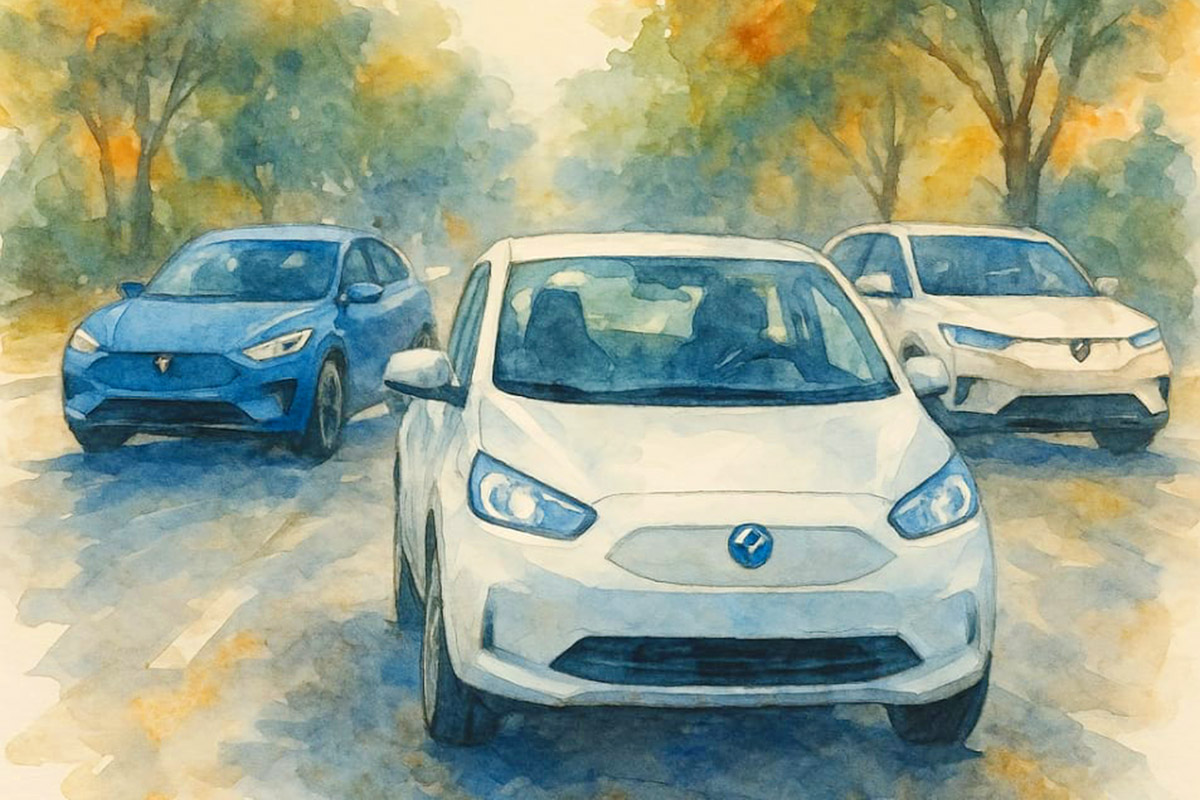
The adoption of electric vehicles is increasingly gaining traction nationwide. Despite an economic slowdown that significantly impacted the broader automobile sector, Nepal has witnessed a surge in electric vehicle sales. This growth is supported by favourable fiscal and monetary policies, which include considerably lower tax rates compared to internal combustion engine (ICE) vehicles and a more advantageous Loan to Value (LTV) ratio.
A high LTV ratio enables borrowers to finance a larger portion of a vehicle’s value, thus requiring a smaller initial down payment. Initially, Nepal Rastra Bank permitted an LTV ratio of up to 80% for electric vehicles, in contrast to 50% and 70% for personal and commercial ICE vehicles, respectively. Although the mid-year review of the monetary policy for 2024/25 has adjusted this to 60%, relevantly the policy still maintains a favourable stance towards electric vehicles.
Globally, the rise in electric vehicle sales is driven by a commitment to reducing carbon emissions through the implementation of clean transportation solutions. Nepal has actively promoted electric vehicles by offering tax concessions, even though vehicles constitute a major source of government revenue. Electric vehicles are now prevalent in both private and public transportation across Nepal.
Notably, Nepal has been a frontrunner in adopting electric transport within South Asia. Sajha Yatayat pioneered the operation of electric buses, initially with trolley buses connecting Tripureshwor in Kathmandu to Suryabinayak in Bhaktapur in the 1970s, and continues this legacy in the current electric vehicle boom, now providing services with a fleet of 40 electric buses in Kathmandu Valley. The increased use of electric vehicles is fuelled by decreasing battery costs, growing affordability and ongoing government support. Beyond private cars and urban transport, electric vehicles, particularly microbuses, are extensively utilised in public transportation for medium-range routes.
Tax on EVs
Initially, the government strongly incentivised the adoption of electric vehicles by imposing minimal taxes. However, starting from the current FY 2024/25, there has been an increase in taxes on electric vehicles. The customs duty has been raised from 10% to 15%, and a 5% excise duty is now applicable for vehicles with a battery capacity ranging from 50 kilowatts. For vehicles with battery capacities between 51 and 100 kilowatts, a 20% customs duty and a 10% excise duty are levied. Similarly, for electric vehicles with battery capacities from 101 to 200 kilowatts, a 30% customs duty and a 20% excise duty are applied. For vehicles exceeding 201 kilowatts in battery capacity, the customs duty has been increased by 20%, while the excise duty has been reduced by 10%.
Table 1: Tax on EVs
|
Battery capacity |
Customs |
Excise |
|
50 kilowatts |
15% |
5% |
|
51- 100 kilowatts |
20% |
10% |
|
101- 200 kilowatts |
30% |
20% |
|
201 kilowatts+ |
50% |
10% |
(Source: Ministry of Finance, Fiscal Year 2024/25)
Conversely, internal combustion engine (ICE) vehicles in Nepal face significantly higher taxation, reaching up to 250%. Furthermore, the loan-to-value ratio, as determined by Nepal Rastra Bank, the regulatory body for banks and financial institutions, is moderately lower for ICE vehicles compared to electric vehicles. This policy is designed to discourage the purchase and use of ICE vehicles.
Electric vehicle adaptation
Nepal is focused on implementing clean transportation solutions as part of its ambitious goal to achieve net-zero emissions by the year 2045. Additionally, according to Damodar Bhandari, Minister for Industry, Commerce and Supplies, promoting clean transport through the utilisation of domestically generated clean energy can significantly reduce the country’s reliance on imported fuel, which constitutes a major portion of Nepal’s imports.
Table 2: Import of petroleum products in last five years
|
FY |
Import of petroleum products (Rs in billion) |
Share in total imports |
|
2019/20 |
163.70 |
13.7% |
|
2020/21 |
175.51 |
11.4% |
|
2021/22 |
334.34 |
17.4% |
|
2022/23 |
309.87 |
19.2% |
|
2023/24 |
300.65 |
18.9% |
|
2024/25* |
210.15 |
16% |
(Source: *9 months of 2024/25, Department of Customs)
The adoption of electric vehicles has significantly increased primarily due to their lower operational costs and the expanding network of charging stations located along highways and within urban areas. It is reported that there are over 400 charging stations operational throughout the country. Electric vehicle dealerships have been actively setting up charging facilities in easily accessible locations to further encourage the sales of their vehicles. Furthermore, Nepal Electricity Authority (NEA) has established 62 fast-charging stations outside Kathmandu valley, contributing to the growing charging infrastructure.
Table 3: Fast charging stations established by NEA outside Kathmandu valley
|
Exit & entry point of Kathmandu valley (Thankot, Kathmandu), Aabukhaireni (Gorkha), Kurintar, Charaudi, Dolakha, Dhulikhel (Kavre), Banepa (Kavre), Dharke (Dhading), Muglin (Chitwan), Paras Buspark (Chitwan), Bharatpur Buspark (Chitwan), Khurkot (Sindhuli), Sindhuli Buspark, Bardibas (Police station), Mahottari, Hariwon (Sarlahi), Birgunj Buspark (Parsa), Itahari (Sunsari), Inaruwa Buspark (Sunsari), Biratnagar (Morang), Police Petrol Pump Lahan (Siraha), Kalika Fuel Centre Pokhara (Kaski), Damak Buspark (Jhapa), Surkhet Buspark, Hetauda Ratamate (Makawanpur), Begnas Lakeside Pokhara (Kaski), Butwal Buspark (Rupandehi), Butwal Buspark (Rupandehi), Kohalpur New Buspark (Banke), Dhangadhi (Kailali), Battar Bazar Trishuli (Nuwakot), Kushma (Parbat), Lamahi Buspark (Dang), Lamki (Kailali), Attariya Buspark (Kailali). |
(Source: Nepal Electricity Authority)
Lokesh Oli, the developer of Charging Stations Nepal – an application designed to locate charging stations nationwide – observed that the adoption of electric vehicles has gained momentum in Nepal, mirroring global trends. This increase is attributed not only to the attention and support from policymakers but also to the considerable enthusiasm and preparedness among consumers. Oli further commented, “Automobile companies have demonstrated significant engagement in the research and development of electric vehicles, suggesting the potential for more advanced and sophisticated products in the years to come.”
Significant milestones
Nepal has also made significant progress in the assembly of four-wheeled vehicles. The Hyundai Creta EV, for instance, is assembled within Nepal by Laxmi Intercontinental, the authorised distributor for Hyundai vehicles in the country. The Creta EV and the locally manufactured CRETA ICE were launched in Kathmandu on March 24, 2025. According to Nirakar Shrestha, Executive Director of Laxmi Group, these domestically produced SUVs have redefined standards in style, performance and innovation.
A major factor attracting consumers to electric vehicles is the expectation that battery prices will continue to decrease in the future. While the sales of internal combustion engine vehicles have declined considerably over the past two years, the sales of electric vehicles have experienced a substantial increase during the same period.
In the first nine months of the current Fiscal Year 2024/25, Nepal imported electric vehicles valued at Rs 20.16 billion. In comparison, the total imports of other vehicles and their components amounted to Rs 45.97 billion during the same review period.
Table 4: Import of electric vehicles in first 9 months of FY 2024/25
|
Categories of vehicles |
Quantity |
Import value |
Import revenue |
|
Other vehicles (Petrol-Electric hybrid) plugin ABOVE 2000CC |
11 |
48,107 |
104,009 |
|
Other vehicles (Petrol-Electric hybrid) plug out ABOVE 2000 CC |
40 |
171,003 |
420,412 |
|
Unassembled Electric three-wheeler vehicles |
4,947 |
492,470 |
165,277 |
|
Electric three-wheeler vehicles |
7,982 |
826,836 |
281,105 |
|
Unassembled Electric cars, jeeps & vans up to 50KW |
9 |
6,410 |
3,217 |
|
Electric cars, jeeps & vans up to 50KW |
2,783 |
4,973,608 |
2,150,914 |
|
Electric cars, jeeps & vans 51KW to <=100KW |
4,414 |
10,947,988 |
6,941,733 |
|
Electric cars, jeeps & vans > 101KW to <=200KW |
742 |
2,560,936 |
2,177,123 |
|
Electric cars, jeeps & vans with motor power ranging from 201 kW to 300 kW |
17 |
124,975 |
195,317 |
|
Electric cars, jeeps & vans with motor power exceeding 300 kW |
2 |
8,323 |
8,826 |
|
Total |
20,947 |
20,160,656 |
12,447,934 |
Source: Department of Customs (In thousand rupees)
Brands in Nepali market
BYD and Tata have established a dominant presence in the Nepali market. The widespread use of Tata’s Tigor model as taxis has significantly boosted its sales figures in Nepal.
Table 5: Brands in Nepali market
|
Personal vehicles segment |
BMW (iX3), Jaecoo (j6), Citroën, Hyundai, KIA, NETA, TATA, Mahindra, NAAMI, Seres, MG, BYD, BAW, Xpeng, Avatar, Deepal, Zeekr, e-Quto02, Henry Volts, Leapmotor |
|
Commercial vehicles segment |
Higer, King Long, SRM, KAMA, Sokon, JOYLONG, EBOO, Tata Ace EVs |
Fossil fuel imports versus use of domestically produced clean energy
The import of petroleum products continues to constitute a significant portion of Nepal’s total imports. Nepal has a long-term strategy aimed at reducing its dependence on fuel imports, a factor that plays a substantial role in the country’s widening trade deficit. Nepal Electricity Authority has established a network of charging stations across the nation to support the government’s policy of implementing clean transportation and gradually replacing internal combustion engine (ICE) vehicles over time.
The adoption of clean transport is expected to increase electricity consumption and strengthen the national economy by mitigating the concerning trade deficit caused by an excessive reliance on petroleum. Nepal has set an objective to elevate per capita energy consumption to 1,500 kilowatt-hours by 2030, a significant increase from the current 410 kilowatt-hours.
“To achieve the target of 1,500 kilowatt-hours of electricity consumption per person by 2030, a minimum growth rate of 20% to 25% is necessary, and we have been implementing clean transport initiatives, clean cooking solutions, and the widespread use of electric appliances,” stated Hitendra Dev Shakya, Managing Director of Nepal Electricity Authority. “Currently, the per-person electricity consumption is only 410 kilowatt-hours, and it requires a threefold increase by 2030.” According to Shakya, increasing energy consumption will largely depend on industrial demand, alongside the adoption of clean cooking and transportation solutions.
Challenge of battery disposal and recycling
As a relatively new adopter of electric vehicles, Nepal has not yet encountered significant issues related to the disposal of lithium-ion batteries, which are known to present environmental challenges. To date, the Nepali government does not have a well-defined plan for the safe disposal of these batteries in a manner that avoids environmental harm.
Moreover, experts indicate that the recycling of lithium-ion batteries is both expensive and intricate. It is understood that the toxic elements contained within lithium-ion batteries, such as heavy metals and electrolytes, pose risks to human health and ecosystems if their disposal is not properly managed. Research has indicated that the variety and complexity of lithium-ion battery chemistries and designs make their recycling and material recovery difficult and economically impractical.
Concerns over Air Quality Index
Kathmandu experienced notably poor air quality in April 2025, which reignited discussions about implementing clean transportation solutions. Experts even suggested operating vehicles with odd and even registration numbers on alternate days until the air quality improved. The movement of a large number of internal combustion engine (ICE) vehicles daily in the capital further exacerbated the air quality. Kathmandu has observed an annual temperature increase of 0.04°C, to which fossil fuel-based mass transportation contributes to some extent. These emissions negatively impacted human health, with eye and respiratory diseases being prevalent in April of this year.
Since the 15th Plan, Nepal has aimed to promote clean transport within the country and accordingly incentivised the import of electric vehicles. This initiative requires the development of associated infrastructure, such as a significant expansion of charging stations.
Considering Nepal’s substantial reliance on fuel imports, introducing electric vehicles on the Ring Road could encourage the nationwide adoption of clean transport solutions in the coming years and reduce the import of fossil fuels, thereby narrowing trade imbalances. Furthermore, according to transport specialist Ashish Gajurel, electric vehicles have lower maintenance costs compared to ICE vehicles.
Controversy over fiscal and monetary incentives
Serious allegations suggest that the government is prioritising the interests of the elite by reducing taxes and providing monetary incentives for electric vehicles. It is observed that affluent individuals primarily use electric vehicles as secondary modes of transportation for short-distance travel, raising questions about who truly benefits from these fiscal and monetary incentives and whether they are effectively serving their intended recipients.
Some policymakers have voiced opposition to these incentives, citing significant revenue losses and the potential misuse of credit from banks and financial institutions by the wealthy. As the formulation of the budget for FY 2025/26 approaches, there is a strong lobby among policymakers to increase taxes on electric vehicles, which could potentially hinder the current momentum of EV adoption.
“I am uncertain about who truly benefits from these incentives. The government must conduct a policy review to determine whether they are indeed helping to achieve the intended objectives,” commented Ritu Singh Vaidya, Managing Director of United Traders Syndicate and President of Nepal Automobile Importers and Manufacturers Association (NAIMA).
Lack of trust due to factory closure and battery safety issues
Conversely, concerns exist regarding the closure of electric vehicle manufacturers, predominantly in China, which has been a major source of EV imports for Nepal. Following these factory closures, owners have been questioning their dealers about after-sales service and the availability of spare parts. Many EV producers in China ceased operations after government incentives aimed at promoting EV manufacturing were depleted. In Nepal, well-established corporate groups had acquired dealerships for these EVs and proceeded with sales.
Furthermore, Nepal’s substandard road conditions present another challenge for electric vehicle users. User experiences indicate that poor road conditions are not conducive to EV driving, particularly for off-road terrain, and light EVs require adequate load for stable high-speed driving on highways. Additionally, users are concerned that inadequate drainage could lead to flooding of EVs and potential battery damage. Studies conducted in the United States have highlighted safety concerns regarding EV batteries when exposed to saltwater flooding. Although there are no conclusive studies on battery damage resulting from freshwater inundation, which is more likely during the rainy season in Nepal, it remains a worry for EV owners.
In conclusion, Nepal is experiencing a significant surge in electric vehicle adoption, driven by favourable government policies, decreasing costs and a commitment to clean transportation and reduced reliance on imported fossil fuels, which heavily contribute to the nation’s trade deficit. This transition is supported by a growing charging infrastructure and even local assembly of EVs. However, challenges remain, including recent tax increases on EVs that could impede progress, the lack of a clear plan for lithium-ion battery disposal, concerns over the effectiveness of incentives primarily benefiting the affluent, and user worries related to poor road conditions and potential battery damage from flooding. Despite these hurdles, the momentum for EV adoption continues, aligning with Nepal’s long-term environmental goals and its aspiration for increased energy consumption through clean sources.



-1765706286.jpg)
-1765699753.jpg)

